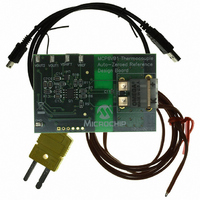MCP6V01RD-TCPL Microchip Technology, MCP6V01RD-TCPL Datasheet - Page 23

MCP6V01RD-TCPL
Manufacturer Part Number
MCP6V01RD-TCPL
Description
REF DESIGN THERMCPL FOR MCP6V01
Manufacturer
Microchip Technology
Datasheets
1.MCP6V01RD-TCPL.pdf
(44 pages)
2.MCP6V01RD-TCPL.pdf
(30 pages)
3.MCP6V03-ESN.pdf
(40 pages)
Specifications of MCP6V01RD-TCPL
Channels Per Ic
1 - Single
Amplifier Type
Chopper (Zero-Drift)
Output Type
Rail-to-Rail
Slew Rate
0.5 V/µs
Current - Output / Channel
22mA
Operating Temperature
-40°C ~ 125°C
Voltage - Supply, Single/dual (±)
1.8 V ~ 5.5 V
Board Type
Fully Populated
Utilized Ic / Part
MCP6V01
Silicon Manufacturer
Microchip
Silicon Core Number
MCP6V01
Kit Application Type
Sensing - Temperature
Application Sub Type
Temperature Sensor
Processor To Be Evaluated
MCP6V01
Lead Free Status / RoHS Status
Lead free / RoHS Compliant
-3db Bandwidth
-
Current - Supply (main Ic)
-
Lead Free Status / Rohs Status
Lead free / RoHS Compliant
4.3.6
Reduce undesired noise and signals with:
• Low bandwidth signal filters:
• Good PCB layout techniques:
• Good power supply design:
4.3.7
With this family of operational amplifiers, the power
supply pin (V
bypass capacitor (i.e., 0.01 µF to 0.1 µF) within 2 mm
of the pin for good high-frequency performance.
These parts also need a bulk capacitor (i.e., 1 µF or
larger) within 100 mm to provide large, slow currents.
This bulk capacitor can be shared with other low noise,
analog parts.
Additional filtering of high frequency power supply
noise (e.g., switched mode power supplies) can be
achieved using resistors. The resistors need to be
small enough to prevent a large drop in V
amp, which would cause a reduced output range and
possible load-induced power supply noise. The resis-
tors also need to be large enough to dissipate little
power when V
cuit in
switched mode power supplies. Smaller resistors and
capacitors are a better choice for designs where the
power supply is reasonably quiet.
FIGURE 4-8:
© 2008 Microchip Technology Inc.
V
to other analog parts
- Minimizes random analog noise
- Reduces interfering signals
- Minimizes crosstalk
- Minimizes parasitic capacitances and induc-
- Isolation from other parts
- Filtering of interference on supply line(s)
S_ANA
tances that interact with fast switching edges
Figure 4-8
100 µF
143Ω
1/4W
REDUCING UNDESIRED NOISE
AND SIGNALS
SUPPLY BYPASSING AND
FILTERING
DD
DD
for single supply) should have a local
1/10W
100 µF
143Ω
gives good rejection out to 1 MHz for
is turned on and off quickly. The cir-
Additional Supply Filtering.
MCP6V0X
0.1 µF
DD
for the op
4.3.8
In order to achieve DC precision on the order of ±1 µV,
many physical errors need to be minimized. The design
of the Printed Circuit Board (PCB), the wiring, and the
thermal environment has a strong impact on the
precision achieved. A poor PCB design can easily be
more than 100 times worse than the MCP6V01/2/3 op
amps minimum and maximum specifications.
4.3.8.1
Any time two dissimilar metals are joined together, a
temperature dependent voltage appears across the
junction (the Seebeck or thermo-junction effect). This
effect is used in thermocouples to measure tempera-
ture. The following are examples of thermo-junctions
on a PCB:
• Components (resistors, op amps, …) soldered to
• Wires mechanically attached to the PCB
• Jumpers
• Solder joints
• PCB vias
Typical thermo-junctions have temperature to voltage
conversion coefficients of 10 to 100 µV/°C (sometimes
higher).
There are three basic approaches to minimizing
thermo-junction effects:
• Minimize thermal gradients
• Cancel thermo-junction voltages
• Minimize difference in thermal potential between
a copper pad
metals
PCB DESIGN FOR DC PRECISION
Thermo-junctions
MCP6V01/2/3
DS22058B-page 23











